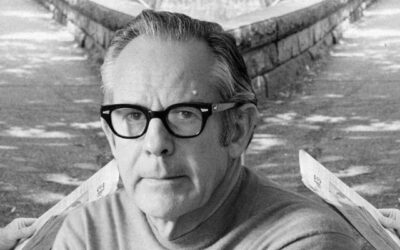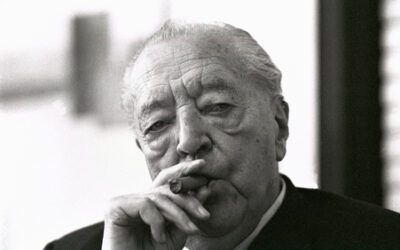Who is John Ryan Haule?

1.1. Early Life and Education
John Ryan Haule was born in 1944 in Pennsylvania. From an early age, he was drawn to questions of meaning, spirituality, and the mysteries of the human mind. This led him to study psychology at Princeton University, where he earned his bachelor’s degree in 1966.
Seeking to deepen his understanding, Haule went on to pursue a PhD in clinical psychology at the University of Michigan. It was during his graduate studies that he first encountered the works of Carl Jung and other depth psychologists, which resonated strongly with his own intuitions about the psyche. He completed his PhD in 1971.
1.2. Clinical and Academic Career
After earning his doctorate, Haule began a private psychotherapy practice in Boston. As a clinician, he was known for his profound empathy, intuition, and skill in helping clients navigate their inner worlds. He drew upon Jungian concepts like the collective unconscious, archetypes, and individuation in his work, while also integrating insights from existential and humanistic psychology.
Alongside his clinical practice, Haule pursued his scholarly interests, teaching and writing extensively on Jungian psychology. He held academic appointments at various institutions, including Lesley University and the New England School of Acupuncture. His courses and seminars on dreams, myths, and the journey of individuation were highly popular among students and practitioners alike.
1.3. Studying with Jung’s Colleagues
In the 1980s, Haule had the opportunity to study directly with several of Jung’s close colleagues and students, including Marie-Louise von Franz in Switzerland and Joseph Henderson in California. These experiences deepened his understanding of Jungian theory and practice, and inspired him to further develop his own unique approach.
Haule was particularly influenced by von Franz’s work on alchemy as a metaphor for psychological transformation. He saw in the alchemical opus a powerful model for the individuation process – the lifelong journey of integrating the conscious and unconscious aspects of the psyche. This insight would shape much of his later writing and teaching.
2. Key Concepts and Contributions
2.1. Integral Jungian Psychology
One of Haule’s major contributions was his articulation of what he called “integral Jungian psychology” – an approach that sought to integrate Jungian concepts with insights from other depth psychologies, as well as from fields like anthropology, comparative religion, and evolutionary psychology.
For Haule, an integral approach meant recognizing both the universal and culturally-specific aspects of the psyche. He argued that while the archetypes and dynamics of the collective unconscious are common to all humans, their specific expressions are shaped by the individual’s cultural context and personal history. An integral Jungian psychology, then, would attend closely to issues of diversity, power, and socio-political realities as they manifest in the consulting room.
2.2. The Journey of Individuation
Haule wrote and lectured extensively on the Jungian concept of individuation – the lifelong process of psychological development and self-realization. He saw individuation not as a linear progression but as a spiraling, recursive journey, full of challenges, regressions, and breakthroughs.
In his 1996 book “The Love Cure: Healing the Historical-Psychological Split through Relationship,” Haule explored how intimate relationships can serve as crucibles for individuation. He argued that it is through the trials and triumphs of love that we come to confront our deepest wounds, shadows, and potentials. By learning to love and be loved authentically, we gradually become more whole and individuated beings.
2.3. Dreams and the Unconscious
Throughout his career, Haule maintained a passionate interest in dreams as windows into the depths of the psyche. He saw dreamwork not only as a key therapeutic tool but as a vital spiritual practice – a way of dialoguing with the wisdom of the unconscious mind.
In his teaching and writing, Haule emphasized the transformative power of working with dreams over time. By recording and reflecting on one’s dreams, he argued, one can begin to discern patterns, themes, and archetypal motifs – the “big dreams” that reveal the deeper currents of the individuation process. He encouraged an attitude of openness, curiosity, and humility in approaching dream material, trusting that the psyche will gradually yield its secrets to the sincere seeker.
3. Dreamwork and Psychospiritual Practice
3.1. The Jungian-Senoi Synthesis
One of Haule’s most original contributions was his integration of Jungian psychology with the dreamwork practices of the Senoi people of Malaysia. In the 1980s, he traveled to Malaysia to study with the Senoi and learn their techniques for lucid dreaming, dream control, and dream healing.
Haule was struck by the parallels between Senoi dreamwork and Jungian active imagination. Both approaches emphasized engaging with dream figures, confronting challenges, and transforming nightmares into opportunities for growth. He began to experiment with incorporating Senoi techniques into his own dreamwork and teaching.
The result was what Haule called the “Jungian-Senoi synthesis” – a powerful approach to dreamwork that harnessed both the symbolic richness of Jungian analysis and the pragmatic, embodied practices of the Senoi. By learning to confront dream adversaries, dialogue with dream characters, and enlist dream allies, individuals could accelerate their individuation process and tap into profound sources of creativity and healing.
3.2. Dreams and Spiritual Practice
For Haule, dreamwork was not only a psychological tool but a spiritual practice – a way of connecting with the numinous dimensions of the psyche. He drew parallels between Jungian concepts like the Self and the Daoist notion of the Tao, the Zen Buddhist experience of satori, and the mystical visions of Christian saints.
In his 2007 book “Dreams of the Hmong Shamans: A Jungian-Anthropological Perspective,” Haule explored how the dream practices of Hmong shamans can illuminate the archetypal foundations of spiritual experience across cultures. He argued that by studying the dreams and visions of shamans, mystics, and other spiritual adepts, we can gain insight into the universal patterns and potentials of the human psyche.
3.3. Teaching and Mentoring
Throughout his career, Haule was a beloved teacher and mentor to countless students and practitioners. He had a gift for translating complex concepts into accessible, engaging language, and for creating safe, nurturing spaces for deep inner work.
In his dreamwork seminars and retreats, Haule guided participants through the Jungian-Senoi process, helping them to confront their shadows, engage with archetypal energies, and access their deeper creativity and wisdom. Many of his students went on to become influential therapists, authors, and dreamworkers in their own right.
4. Legacy and Influence
4.1. Writings and Publications
Over the course of his career, Haule published numerous books and articles that have had a significant impact on the fields of Jungian psychology and dreamwork. Some of his key works include:
- “Gnosis: Understanding Our Deepest Spiritual Experiences” (1989)
- “The Love Cure: Healing the Historical-Psychological Split through Relationship” (1996)
- “Indecent Practices and Erotic Trance: A Guide to Ecstatic Potentials” (2003)
- “Perils of the Soul: Overcoming a Lifetime of Resistance to Wholeness” (2005)
- “Dreams of the Hmong Shamans: A Jungian-Anthropological Perspective” (2007)
Haule’s books are known for their depth, originality, and accessible style. They continue to be widely read and cited by Jungian scholars, psychotherapists, and dreamworkers around the world.
4.2. The Jungian-Senoi Institute
In 1996, Haule founded the Jungian-Senoi Institute, a nonprofit educational organization dedicated to promoting the Jungian-Senoi approach to dreamwork and psychospiritual growth. The Institute offers workshops, retreats, and certificate programs that train therapists and lay people in the theory and practice of Jungian-Senoi dreamwork.
Under Haule’s leadership, the Institute has become a hub for cutting-edge research and practice in the field of dreamwork. It has attracted faculty and students from around the world, and has played a key role in spreading the Jungian-Senoi approach to new audiences and contexts.
4.3. Continuing Influence
Although Haule passed away in 2020 at the age of 76, his legacy continues to inspire and inform the work of Jungian scholars and dreamworkers around the globe. His vision of an integral, embodied, and spiritually-attuned psychology has shaped the practice of countless therapists and healers.
In particular, Haule’s work on dreams and the Jungian-Senoi synthesis has opened up new frontiers in the field of dreamwork. By demonstrating the power of lucid dreaming, dream dialogue, and dream healing, he has helped to legitimize dreamwork as a serious therapeutic and spiritual practice. His ideas have been taken up and developed further by a new generation of dreamworkers and researchers.
Moreover, Haule’s emphasis on the transformative power of relationships and the socio-cultural dimensions of the psyche has helped to push Jungian psychology in a more integral and socially-engaged direction. His work has encouraged Jungian analysts to grapple more deeply with issues of diversity, power, and social justice as they manifest in the consulting room and the wider world.
Conclusion The life and work of John Ryan Haule stands as a testament to the profound depths and potentials of the human psyche. Through his clinical practice, scholarship, and teaching, Haule helped to expand the horizons of Jungian psychology and to make its insights accessible to a wider audience.
In particular, Haule’s pioneering work on dreams and the Jungian-Senoi synthesis has opened up new pathways for inner growth and transformation. By teaching us to engage actively with our dreams, to confront our shadows, and to harness the power of archetypal energies, Haule has given us a set of powerful tools for the journey of individuation.
At the same time, Haule’s emphasis on the integral and relational dimensions of the psyche serves as a reminder that our personal development is always intimately interwoven with our cultural, historical, and interpersonal contexts. As we seek wholeness and self-realization, we must also grapple with the larger systems and structures that shape our lives and our world.
As we look to the future of depth psychology and dreamwork, the legacy of John Ryan Haule will continue to serve as an inspiration and a guiding light. May his vision of a spiritually-attuned, socially-engaged, and deeply transformative psychology continue to inform our theory, our practice, and our personal journeys of growth and awakening.
References:
Haule, J. R. (1989). Gnosis: Understanding Our Deepest Spiritual Experiences. Shambhala Publications.
Haule, J. R. (1996). The Love Cure: Healing the Historical-Psychological Split through Relationship. Nicolas-Hays.
Haule, J. R. (2003). Indecent Practices and Erotic Trance: A Guide to Ecstatic Potentials. Nicolas-Hays.
Haule, J. R. (2005). Perils of the Soul: Overcoming a Lifetime of Resistance to Wholeness. Nicolas-Hays.
Haule, J. R. (2007). Dreams of the Hmong Shamans: A Jungian-Anthropological Perspective. The Analytical Psychology Club of New York, Inc.
Haule, J. R. (2010). Jung in the 21st Century Volume One: Evolution and Archetype. Routledge.
Haule, J. R. (2011). Jung in the 21st Century Volume Two: Synchronicity and Science. Routledge.
The Jungian-Senoi Institute. (2021). About Us. http://jungian-senoi.org/about-us/
Read More Depth Psychology Articles:
Taproot Therapy Collective Podcast
Jungian Analysts
Anthropology
Mystics and Gurus

























0 Comments